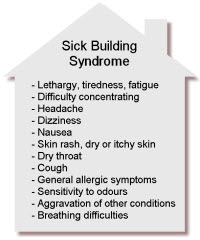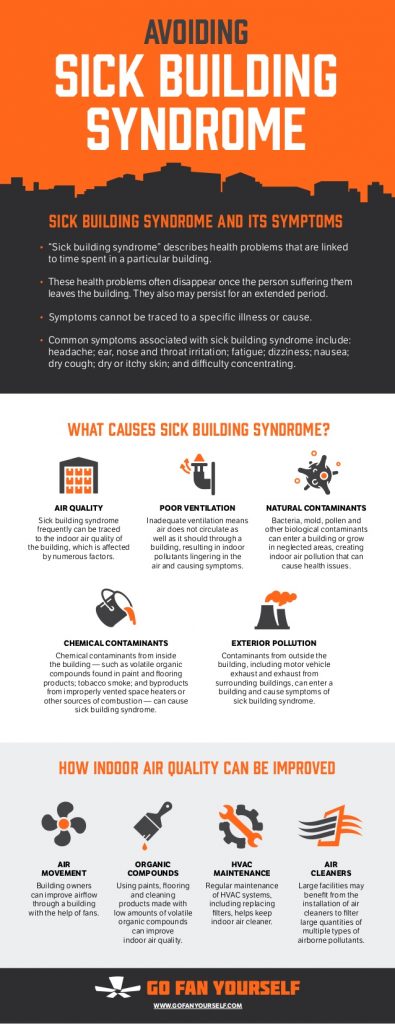Avoiding Sick Building Syndrome in the Workplace
Sick Building Syndrome – Avoid this in the Workplace
Sick Building Syndrome (SBS) incorporates many facets of the built environment.
Focus on Indoor Air Quality
When it comes to air pollution, we tend to think about it in terms of the outdoors. We worry about factories’ smokestacks, traffic jams and other factors that pump pollutants into the air.
Yet air pollution isn’t just an outdoor problem.
The air indoors also can be toxic for us to breathe. This is especially in an industrial facility where hazardous materials may be used. In fact, the air quality inside buildings can be so harmful that it can cause illnesses. This phenomenon, known as “SBS,” can create symptoms in people without an easily identifiable cause.

Further, people with sick building syndrome may experience respiratory issues such as shortness of breath and coughing, as well as more generalised symptoms such as fever and muscle aches.
SBS – What Does it Mean for the Workplace?
These illnesses can lead to decreased productivity and employees taking excessive time off. As a result, it’s important for industrial and commercial facilities to understand sick building syndrome and how to avoid it.
SBS can be caused by a variety of factors, all of them related to a building’s indoor air quality.
Often, sick building syndrome is a result of poor ventilation, which prevents indoor pollutants from being circulated out of the air.
Many times, contaminants such as motor vehicle exhaust or fumes from volatile chemicals used in industrial processes get trapped inside the building. Bacteria, mould and pollen from outside also can contribute to sick building syndrome.
Avoiding Sick Building Syndrome
Avoiding SBS starts with improving air flow throughout the building, such as with large fans.
From here, other measures to improve indoor air quality include:
- selecting less toxic cleaning products and methods,
- avoiding “air fresheners,”
- creating a “fragrance-free” workplace,
- choosing real wood furniture (instead of “was wood” composite woods),
- selecting furnishings made locally that are low in volatile organic compounds, and
- ensuring that any leaks are fixed promptly and that there is no mould in the workplace.
Improving indoor air quality and avoiding SBS are tasks that should be at the top of most managers’ priority lists.
Not only can it boost the health and well-being of employees, but it also can increase productivity and reduce health care liabilities for the facility owner.
This infographic from Go Fan Yourself provides some great tips on improving indoor air quality quality and reducing the risk of SBS.

#Sickbuildingsyndrome #OHS #WHS
References:
https://www.epa.gov/sites/production/files/2014-08/documents/sick_building_factsheet.pdf
